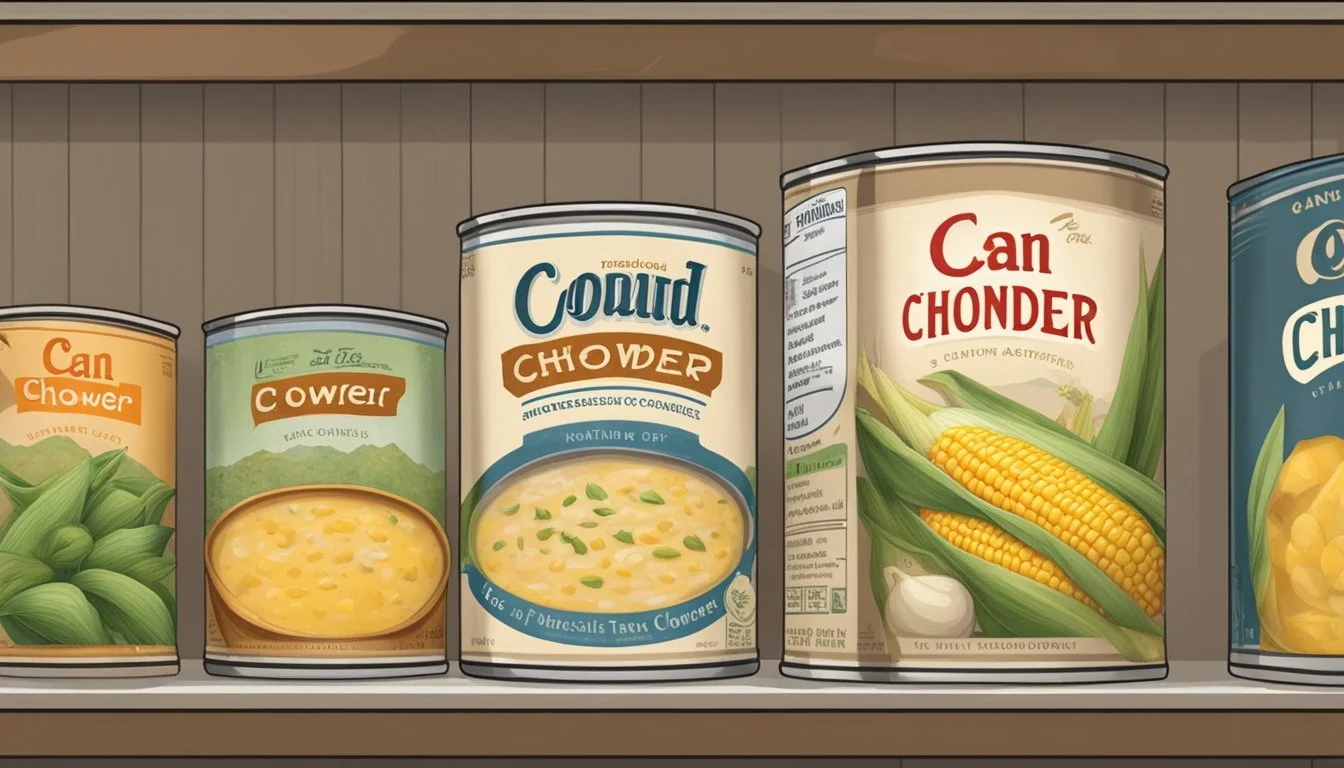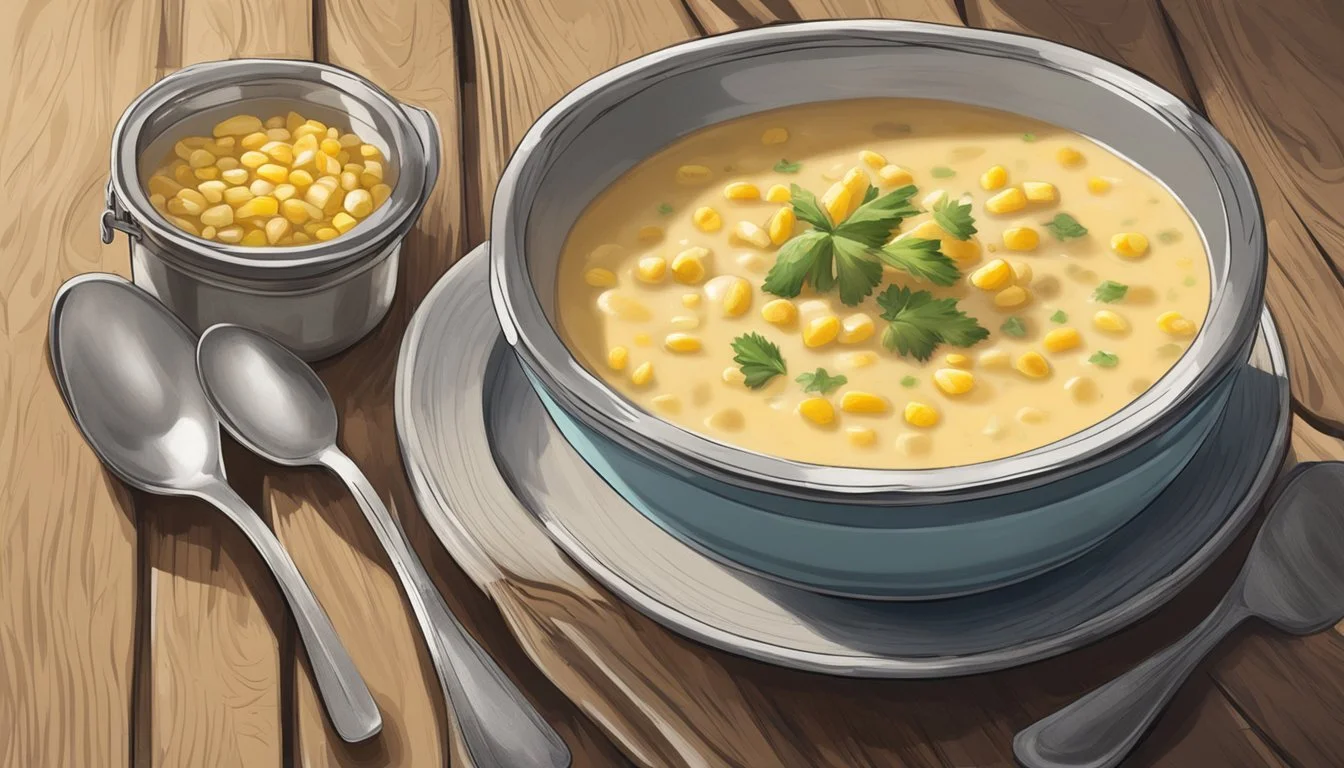Does Canned Corn Chowder Go Bad?
Shelf Life and Storage Tips
Canned corn chowder is a convenient, shelf-stable option for quick meals, but like all canned foods, it has its limitations on how long it can be safely consumed. Canned corn chowder can go bad, especially if it is past its expiration date or shows signs of spoilage. Recognizing when it’s no longer safe to eat is crucial for maintaining a healthy diet.
The shelf life of canned corn chowder depends on several factors, including proper storage. Ideally, it should be kept in a cool, dry place to maximize its longevity. While canned foods generally have a long shelf life, changes in taste, texture, and nutrient composition can occur over time, especially in low acid foods like corn chowder.
Understanding the signs of spoilage is essential. Canned corn chowder that has an off smell, bulging can, or a change in color should be discarded immediately. These indicators are crucial for ensuring the safety of your meals and avoiding foodborne illnesses.
Understanding Canned Corn Chowder
Canned corn chowder, a convenient version of the classic soup, combines rich, creamy textures with hearty ingredients like potatoes and bacon. Key topics include the main components and variations, the canning process, and the nutritional details.
Components and Variations
Corn chowder typically features corn, potatoes, cream, and other vegetables like celery and carrots. Bacon or ham is sometimes added to enhance flavor. Onion and garlic provide aromatic depth, while butter and flour help to create a smooth, thick consistency.
Variations may include adding chicken or making vegetarian versions with fresh or canned corn. Some recipes use whole milk instead of cream to lower the calorie content.
Canning Process and Safety
Canning corn chowder safely involves several steps. First, the chowder is prepared and filled into sterilized jars, leaving a small space at the top. The jars are then sealed and processed in a pressure canner, which is essential for low-acid foods like corn chowder to prevent botulism.
The USDA provides detailed guidelines on the correct temperatures and processing times to ensure safety. Signs of spoilage, such as bulging lids or leaking jars, indicate compromised quality and potential health risks.
Nutritional Information
Corn chowder is a comfort food known for its rich and creamy nature. A typical serving may contain significant amounts of calories, fats, and sugars due to ingredients like cream and butter. Adding vegetables and using low-fat dairy options can make it healthier.
Nutrition labels on canned versions provide information about serving size, calorie content, and nutrients, aiding in balanced dietary choices. The inclusion of meat like bacon can increase protein but also adds sodium.
By understanding these elements, consumers can make informed choices about incorporating canned corn chowder into their diet.
Proper Storage Techniques
Proper storage is essential to maintain the safety and quality of canned corn chowder. Factors such as shelf life, optimal storage conditions, and effective freezing and reheating tips are crucial for preserving freshness and preventing bacteria growth.
Shelf Life Determinants
The shelf life of canned corn chowder depends on several factors. Unopened canned corn chowder can last for years if stored in a cool, dry place. However, once opened, the soup's longevity decreases significantly.
Broth-based chowders tend to last longer in the fridge than cream-based versions. For safety, leftovers should generally be consumed within 3-4 days. Any off smells, changes in texture, or visible mold indicate spoilage.
Optimal Storage Conditions
To keep canned corn chowder fresh, transfer it to an airtight container after opening. Refrigerate promptly to slow down bacteria growth.
Store at or below 40°F (4°C) to maintain quality. For longer storage, freezing is an option. Ensure the container is well-sealed to prevent the soup from absorbing freezer odors and to avoid freezer burn. Label with a date to keep track of freshness.
Freezing and Reheating Tips
Freezing extends the storage life of canned corn chowder. Portion into smaller containers to make reheating easier. Leave some space in containers before freezing as liquids expand when frozen.
For reheating, thaw the chowder in the fridge overnight. Reheat on the stove over medium heat or in the microwave, stirring occasionally to ensure even heating. Bring it to a rolling boil to kill any potential bacteria. Avoid reheating multiple times, as it can degrade the soup's quality.
Identifying Spoilage in Canned Corn Chowder
Detecting spoilage in canned corn chowder is crucial to ensure safety and quality. Spoilage can manifest through visual and texture changes, as well as through noticeable odor and taste alterations.
Visual and Texture Changes
Spoiled canned corn chowder often shows distinct visual signs. Check for mold growth on the surface or inside the jar – this is a clear indicator of contamination.
Examine the color of the chowder. Fresh chowder should have a consistent yellow or creamy hue; any darkening, unusual spots, or discoloration suggests spoilage.
Inspect the texture carefully. The chowder should have a smooth, slightly chunky consistency. If it appears excessively watery, mushy, or has any separation of components, it might be spoiled. Also, look for gas bubbles that indicate fermentation.
Odor and Taste Assessment
Odor is a strong indicator of spoiled canned corn chowder. Fresh chowder typically has a mild, sweet corn aroma. A sour smell, or any off-putting or rancid odor, is a red flag.
When confirming spoilage, it is important to assess the flavor. The chowder should have a rich, savory taste with a subtle sweetness from the corn. An off flavor that is bitter, sour, or unusually sharp indicates spoilage.
Be cautious when tasting; if there's any suspicion of spoilage from the odor, it's best not to proceed with tasting. These assessments help ensure the safety and enjoyment of your canned corn chowder.
Enjoying Canned Corn Chowder
Canned corn chowder can be delicious and comforting when served creatively. Enhancing its flavor with various seasonings and garnishes can elevate the dish. Numerous corn chowder recipes provide diverse options for enjoying this classic soup.
Serving Suggestions
Canned corn chowder pairs well with diverse sides and toppings. Serve it with cornbread or garlic bread for a hearty meal.
Garnish the chowder with crumbled bacon, scallions, or shredded cheese for added flavor and texture. A dash of paprika or cayenne pepper can bring a subtle kick.
Salt and pepper can be added to taste. For a richer taste, consider stirring in a bit of heavy cream or butter before serving.
Flavor Enhancements
To enhance the flavor of canned corn chowder, various spices and seasonings can be added. Garlic, thyme, and dried thyme bring depth to the taste profile.
Use vegetable broth or stock to thin the chowder if it is too thick. Incorporate kosher salt for balanced seasoning. Fresh green onion and yukon gold potatoes can also be added when reheating.
Additionally, frozen corn serves as an effective way to add texture and freshness to the chowder.
Corn Chowder Recipes
Several accessible recipes can modify canned corn chowder for unique twists. Some recipes include adding cream-style corn or a mix of cream and stock for a creamier soup.
New England corn chowder often incorporates seafood for a coastal touch.
For a heartier recipe, try adding yukon gold potatoes and more vegetables like celery and carrots. Experimenting with different herbs and spices can bring out new flavors.
In essence, recipes provide ample room for personalization to suit different tastes and preferences.
Community and Resources
Engaging with the community and exploring available resources can greatly enhance one's understanding and handling of canned corn chowder. From recipe sharing on social media platforms to detailed culinary reviews, these elements offer practical insights and diverse perspectives.
Online Sharing Platforms
Platforms like Pinterest, Instagram, and Facebook are treasure troves for culinary enthusiasts. Users share recipes, canning techniques, and storage tips for corn chowder. Pinterest, with its abundance of printable recipes and step-by-step guides, offers accessible and clear instructions.
Instagram is filled with visuals showcasing different variants of canned corn chowder. People often tag their creations using hashtags such as #cornchowder or #homemadecanning, fostering a large community of like-minded individuals. Facebook groups dedicated to homesteading and canning allow for interactive discussions and real-time advice.
Culinary Reviews and Ratings
Reading reviews and star ratings helps gauge the quality and longevity of canned corn chowder recipes. Websites and forums often feature detailed culinary reviews, where users discuss their personal experiences with specific recipes.
These reviews typically include star ratings that reflect overall satisfaction. High star ratings usually indicate well-preserved and tasty chowder. Detailed reviews might also offer tips on how to improve recipes or adjust canning methods for better results. Resources like these provide practical feedback that can be instrumental in producing the best possible canned corn chowder.






